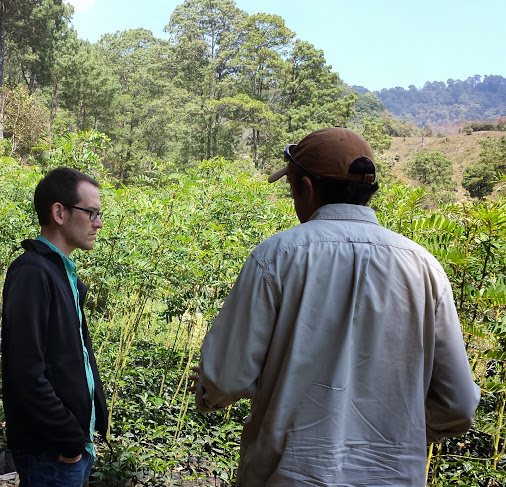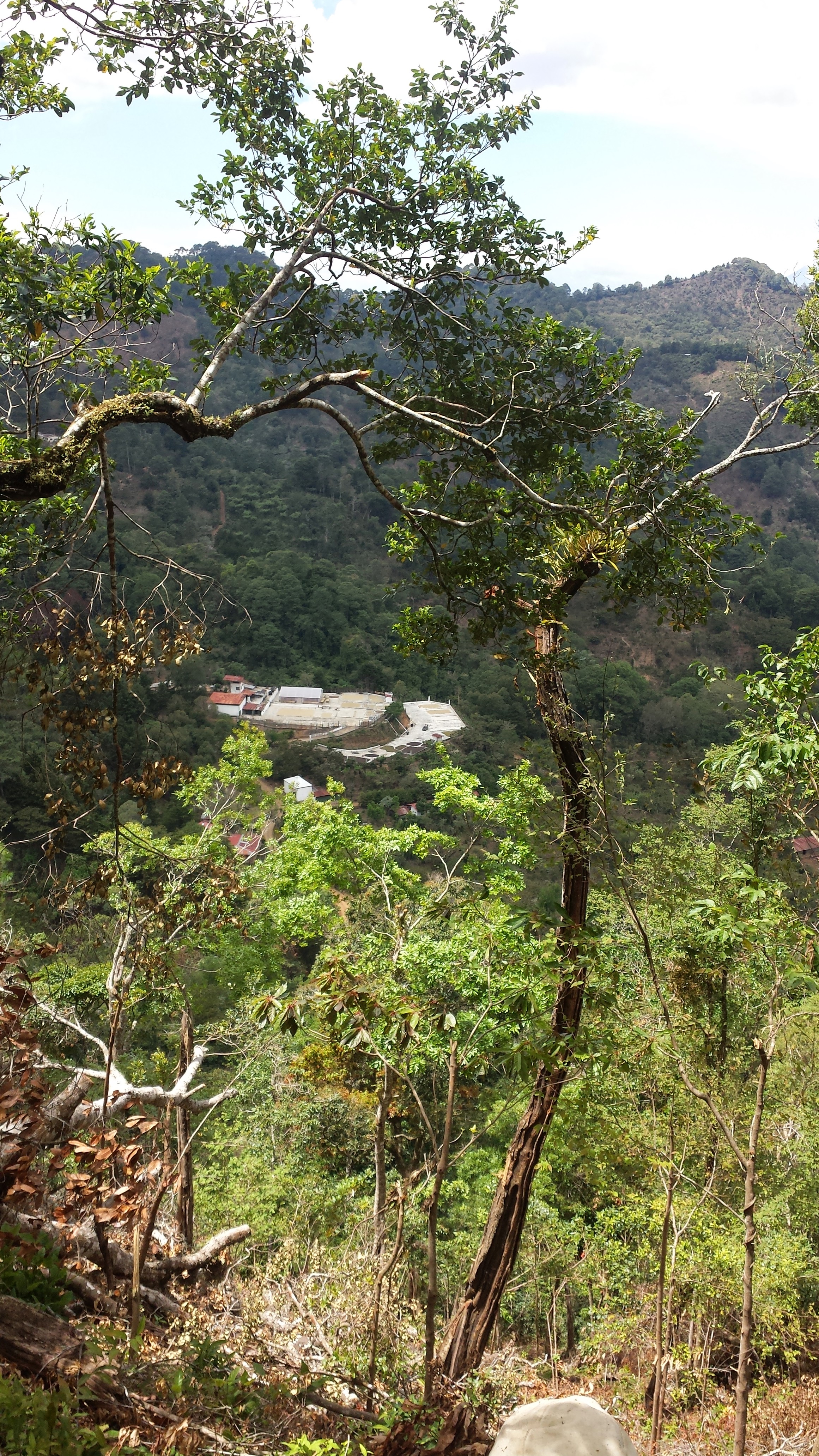Above: Nursery at Santa Ana; talking with Fernando Diaz (right), who runs Santa Ana; patio and raised bed drying; looking down on the wet mill from higher up on the farm.
This coffee is no longer available.
Santa Ana
milk chocolate, red apple, pear, sugar cookie
| Producer: | Fernando Diaz |
| Region: | Pueblo Nuevo Viñas, Guatemala |
| Elevation: | 1600–1800 meters |
| Process: | Washed & Dried on Raised Beds |
| Variety: | Red Catuai & Bourbon |
| Harvest: | January 2019 |
| Storage: | GrainPro™ |
| Relationship: | Seventh Year Direct Trade |
Santa Ana is the crown jewel of a set of four farms managed by Fernando Diaz; it is in the southern portion of Guatemala—about an hour from Guatemala City with no traffic. Fernando's father had originally run the property as one main farm, but then split up the property among his four children. One farm retained the Santa Ana name, while the other three were given new designations. Today, Fernando manages all four along with the wet mill.
Santa Ana has produced some of the best coffees in Guatemala on several harvests over the past decade, placing highly in the prestigious Cup of Excellence competition. Over the past several years we have enjoyed working with Fernando on selecting lots and seeing how he continues to implement systems to improve tracking of sub-plots, processing improvements, and developing new lots with various novelty varietals.
This Santa Ana lot was selected from a diverse selection of over a dozen top offerings; officially designated as "Lot 45A7," it was picked in late January just as peak harvest began. The lot is mostly Red Catuai, with some Bourbon interspersed. On each day that the cherry arrived at the mill, it was washed with fresh water to remove floaters and debris, then left to sit for the next day when it was processed with a depulper and fermented in more fresh water for twenty-six hours—a much slower rate than the traditional fast fermentation (6-18 hours is common). Post-fermentation, the mucilage was removed by washing in a channel with fresh water, then dried on greenhoused raised beds.
Each of these steps seems like trivial minutiae, but when combined together they form a series of best practices that pays off in a better structured cup, improved flavor clarity, and an emphasis on delicate, sweeter flavors.





